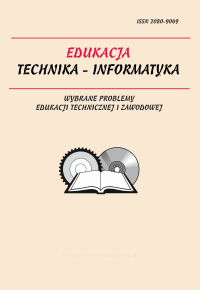Wiedza potoczna: pomoc czy przeszkoda? Eye-trackingowa analiza rozwiązań zadania z zakresu nauk przyrodniczych
Słowa kluczowe:
dydaktyka, eye-tracking, analiza rozwiązywania problemów przyrodniczych, przeszkody epistemologiczne, wiedza potocznaAbstrakt
Artykuł stanowi kontynuację analizy badań, których opis zamieszczony został w niniejszym wydawnictwie w artykule Różnice w rozwiązywaniu problemów fizycznych przez nowicjuszy i ekspertów (Wcisło, Błasiak i inni). Przedmiotem analiz są różnice w rozwiązywaniu problemów matematyczno-fizycznych między nowicjuszami a ekspertami. Wykorzystując rezultaty tego samego eksperymentu z wykorzystaniem technologii eye-trackingowej, lecz stosując inną metodologię badań, przedstawiamy dalsze analizy wyżej wspomnianych wyników. Poszukujemy przyczyn tak dużej liczby błędnych odpowiedzi do zadania. Odpowiadamy na pytanie, czy wiedza potoczna stanowi pomoc, czy przeszkodę w rozwiązaniu tego zadania. Twierdzimy, że przyczyna słabej rozwiązywalności zadania tkwi głębiej – w przeszkodach epistemologicznych związanych z rozumieniem pojęcia funkcji oraz w sposobie wykorzystania wiedzy potocznej i szkolnej, a także w umiejętności utrzymania tzw. dyscypliny myślenia.Pobrania
Opublikowane
2014-12-30
Jak cytować
SAJKA, M., & ROSIEK, R. (2014). Wiedza potoczna: pomoc czy przeszkoda? Eye-trackingowa analiza rozwiązań zadania z zakresu nauk przyrodniczych. Journal of Education, Technology and Computer Science, 10(2), 375–383. Pobrano z https://journals.ur.edu.pl/jetacomps/article/view/6621
Numer
Dział
ICT W BADANIACH EDUKACYJNYCH
Licencja
Prawa autorskie (c) 2014 Journal of Education, Technology and Computer Science

Utwór dostępny jest na licencji Creative Commons Uznanie autorstwa – Na tych samych warunkach 4.0 Miedzynarodowe.

